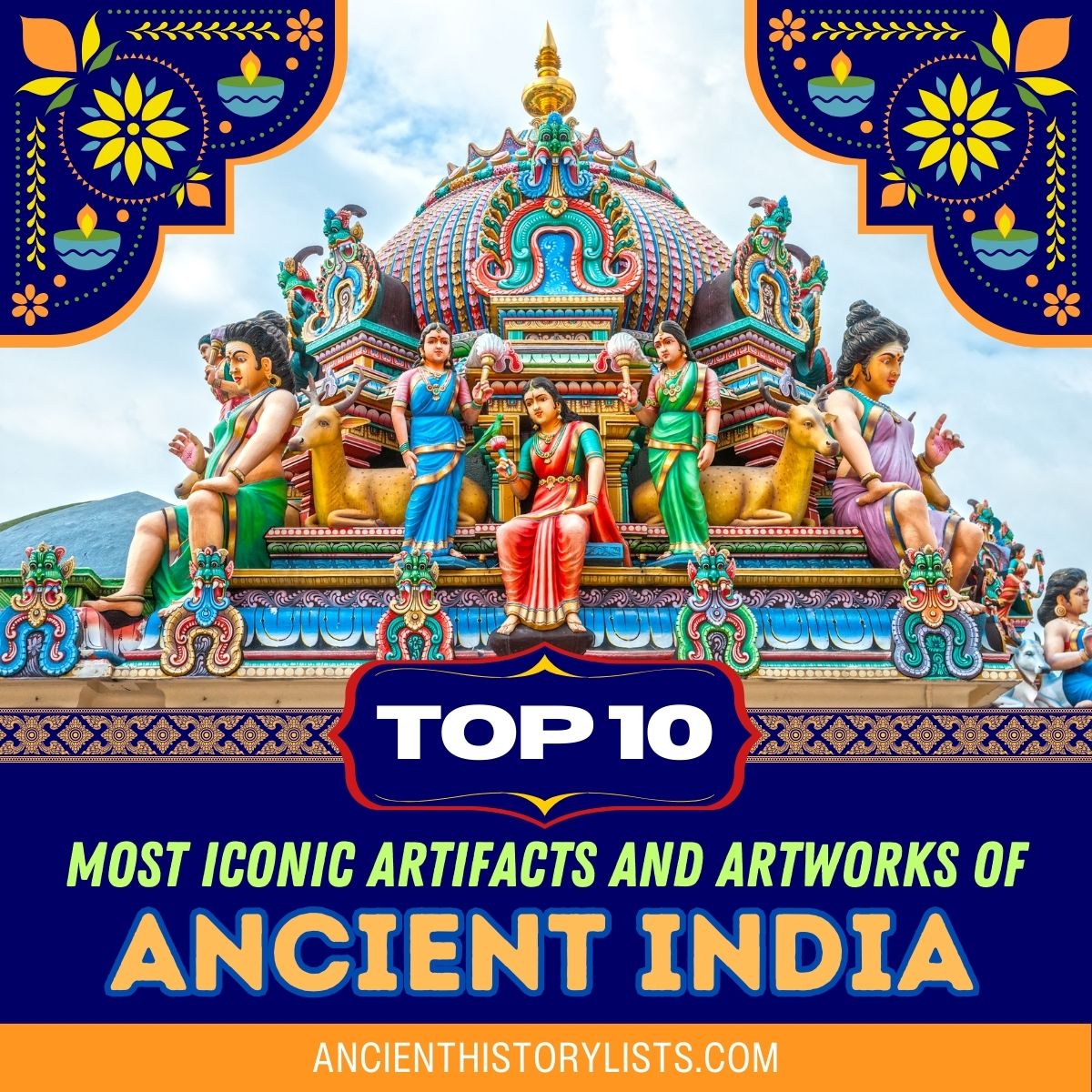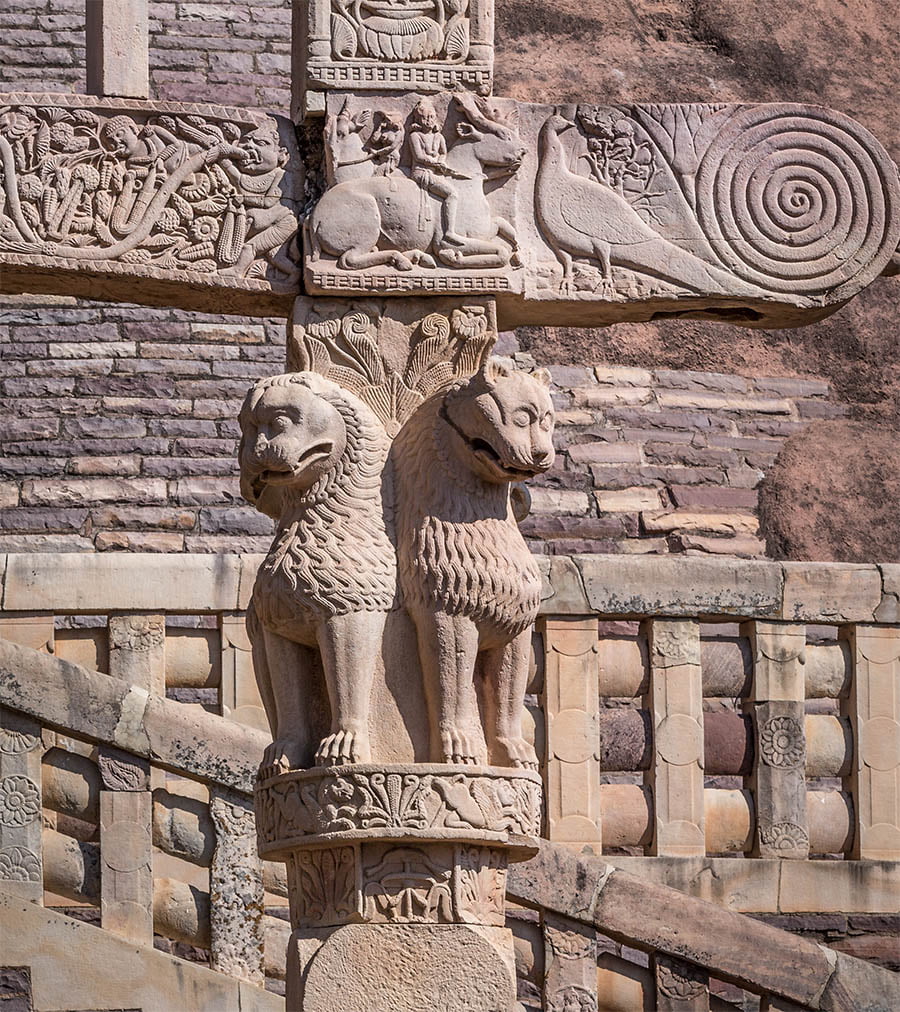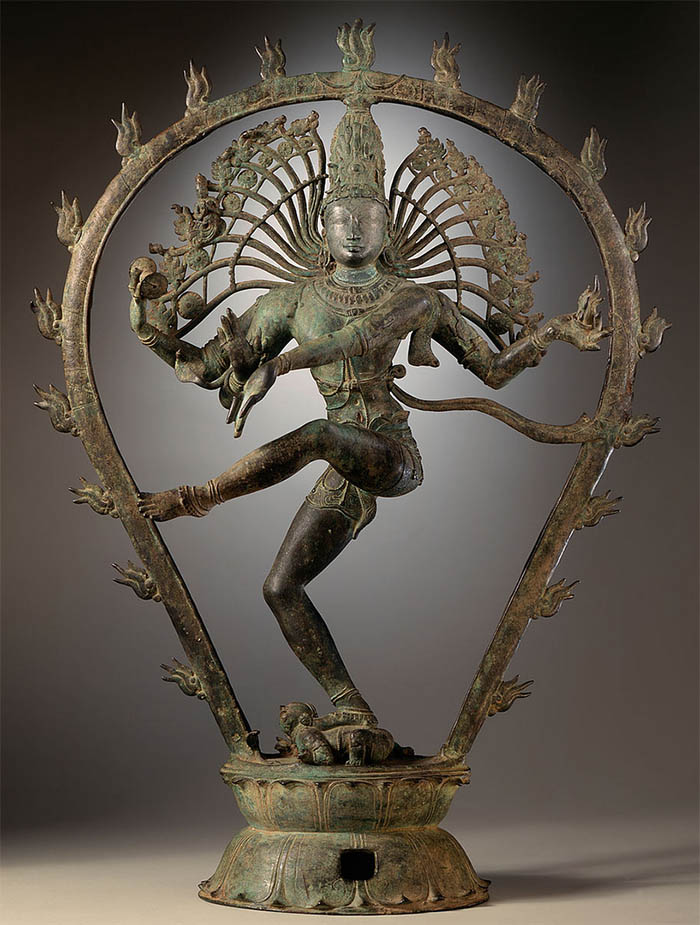India is well known for its art heritage, with all of its monuments, artifacts, and works of art a combination of Mughal, Hindu, or Tamil influences. Interestingly, Indian art displays hardly any evidence of having been influenced by other cultures.
While India has had a significant cultural influence from the British, which can be seen in much of its architecture and infrastructure, the country’s art has maintained its autonomy.

Here are the top 10 art pieces that showcase India’s amazing culture and heritage:
1. Bharat Mata Painting
The most famous piece of ancient Indian art is the Bharat Mata by Abanindranath Tagore who founded the Bengal School of Art. In the painting, Bharat Mata (mother goddess of India) is depicted as a sadhavi which means “saint.” She has four hands and is shown holding a book and wearing a saffron robe.
White garlands are wrapped around or held in her hands. The painting has become popular amongst nationalists and also played a part in Lord Curzon’s plan to split Bengal when the painting was carried to various places to spread its message to the people.
2. Shakuntala Painting
The Shakuntala is an epic painting by the great Indian painter Raja Ravi Varma. His treatment of the subject is so realistic it looks like a movie still. The character of Shakuntala from the epic Mahabharata has been painted plucking a thorn from her foot in front of her lover Dushyantha while her friends call her bluff.
3. Warli
Warli is a form of tribal art mostly from the Maharashtra and Gujarat regions. The tribes used to paint the walls of their houses in the Warli style which uses geometric patterns to describe life.
These paintings were designed to show the modesty of life and illustrate different joyous moments in the lives of the people, such as festivals. Rice paste on a red soil base was used as paint and was applied using bamboo sticks.
4. Sanchi Stupa

The Sanchi Stupa is situated at Sanchi in the state of Madhya Pradesh and is the oldest and most well-known sculpture in India. It is said to have been part of a Buddhist complex and was thought to have been built in the second century BC.
The Ashoka pillar on the site has four lion heads carved into its peak and inscriptions of Ashoka written in Brahmi characters.
The stupa has a hemispherical top which is known as a chhatri or rooftop.
The great Indian emperor Ashoka saw the stupa and described it as a looking like a person. It is considered to be the oldest stone structure in India.
5. Ajanta and Ellora Caves
The Ajanta and Ellora caves are famous because they tell many stories of ancient India. These Buddhist caves, which are situated near to Jalgaon in Maharashtra, are part of a wider cave network thought to number approximately 30 caves in total. They are believed to have been created during two time periods: the Satavahana period and the Vakataka period.
The most exciting fact about these caves is that they were hidden until the year 1819 when they were discovered by the British. The Ellora caves feature Hindu, Buddhist, and Jain monuments and artworks.
6. Self-Portrait of Rabindranath Tagore
Rabindranath Tagore was not only a great poet, writing the Indian national anthem, but was also a great artist. Tagore didn’t start painting until 1924 at the age of 63. Before this, his art career had consisted of only a few old doodles in his diary.
Tagore created many wonderful pieces of art, but his self-portrait is different from all of them. The dark background and the saturated outlines give the painting a unique feel, as if it is somehow unfinished. This painting shows the painter as a bearded old man with an expression of divine patience on his face.
The human face had always been a reflection of the soul, with emotions like love, fear, and sadness clearly expressed. This painting seems to capture all these emotions on a single face.
7. The Nataraja Statue

Indian art is often inextricably linked to its religious practices. Nataraja means “lord of the dance” and this bronze sculpture from the Chola dynasty in the 10th century depicts the Hindu god Shiva performing a dance from the scriptures known as the Tandava.
The dance also features in ancient Hindu texts like the Anshumadbhed agama and the Uttarakamika agama. The dance may have originated from the south part of India, but is depicted in art all over the country such as in the sixth-century Ellora and Badami caves.
8. The Priest King from Mohenjo-Daro
The Harappa civilization, dating from 6000 BC, was one of the most advanced civilization of its time. As well as being ahead in terms of infrastructure and economics, its art was also very advanced. One of the most famous pieces of art from this era is the Priest-King sculpture. The statue depicts a male figure with a ribbon or some type of contemporary jewelry on his head.
The same circular band can also be found on the right upper arm of the statue. The figure’s hair is combed back, the upper lip is shaved, and we can also see a short, well-combed beard. There are two holes under the ears that surely suggest some type of jewelry was attached to the statue. The civilization was also rich in terms of clothing, and the left shoulder is covered with a decorated cloth which was red in color.
9. The Dancing Girl from Harappa
Also from the Harappa civilization, the Dancing Girl is a 4 inch × 2 inch bronze statue of a confident, naked, young girl. The figure is wearing 24 bangles on her left arm above the elbow, and on the right arm, there are four bangles and something held in her hand. The arms seem long when compared to other parts of the body.
The British archaeologist Ernest Mackay first discovered the sculpture in 1926, and in 1932, another British archaeologist, Mortimer Wheeler, claimed that this was his favorite statuette. He describes the statue:
“She’s about fifteen years old, I should think, not more, but she stands there with bangles up her arm and nothing else on. A girl perfectly fit for the moment, perfectly confident of herself and the world. There’s nothing like her, I think, in the world.”
10. The Taj Mahal
Known as a symbol of love all over the world, the Taj Mahal is located in Agra on the banks of the River Yamuna. In a vast Mughal garden of 17 hectares, the Mughal emperor Shah Jahan built the Taj Mahal in loving memory of his wife, Mumtaz. The construction of the main building was said to have started in 1632 and was completed in 1648. After this, work began on the outer courtyard and other buildings. The whole complex was finally finished in 1653.
The Taj Mahal is one of the new seven wonders of the world, and without doubt is an architectural beauty. The domes and arches are typical of the architecture of ancient India, yet the Taj Mahal is absolutely unique. Placing the tomb at the end of the garden instead of in the middle offers a distant view of the monument. The tomb is further raised on a square base so that it can be seen from a distance.
Conclusion
Indian art is not only beautiful in its own right, but it often encompasses ancient stories and myths which are integral to Indian history and culture. It allows us an insight into every aspect of Indian life such as battles, stories, legends, religion, architecture, or simply the everyday life of the people.